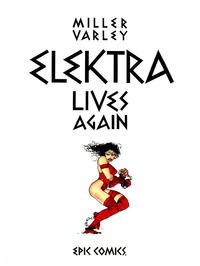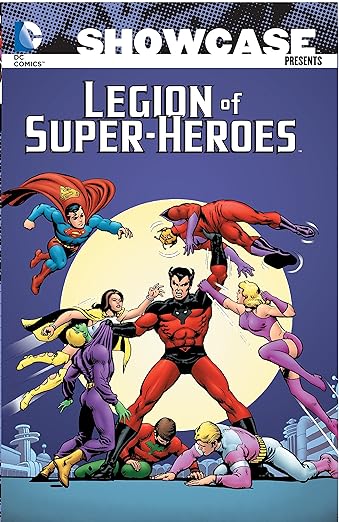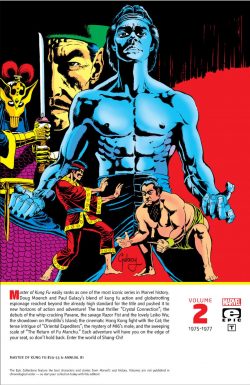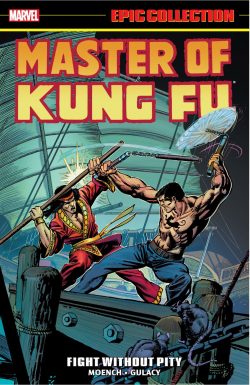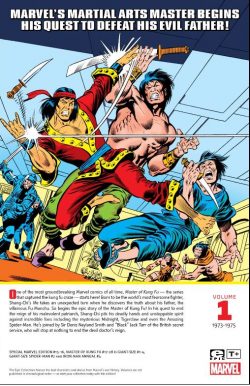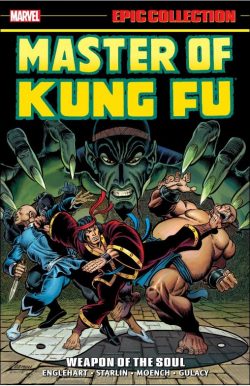


By Kevin Eastman & Peter Laird, Steve Lavigne & various (IDW)
ISBN: 978-1-61377-007-8 (TPB) eISBN: 978-1-62302-298-3
FORTY(!!!) years ago this month an indie comic by a pair of cannily adroit wannabe creators began making waves and soon sparked a revolution. The guys were Kevin Eastman & Peter Laird and their work did remarkably well, interesting companies outside our traditionally cautious insular industry and garnering a few merchandising deals. Thanks to TTE (the Telescoping Time Effect that renders the passage of many years between adulthood and the grave to the blink of an eye), my comics generation still regard these upstart critters as parvenu newcomers.
The Teenage Mutant Ninja Turtles first appeared in May 1984, bombastically occupying an oversized, self-published black-&-white parody mag. Eastman & Laird were huge fans of Ditko and Kirby, and so set up Mirage Studios so they could control their efforts, having great fun telling pastiche adventures notionally derived and inspired by contemporary superhero fare.
They especially honed in on the US marketplace’s obsession with Frank Miller’s reinterpretations of manga stars Kazuo Koike & Goseki Kojima: particularly Lone Wolf & Cub. There were also smart pokes at and conceptual themes poached from other top trends as inspired by The X-Men, New Teen Titans and outsider icon Howard the Duck. This was at a time when the US industry was experiencing an explosive boom in do-it-yourself comics: one that changed forever the very nature of the industry and destroyed the virtual monopoly od DC and Marvel.
Eastman & Laird’s quirky concept became the paradigm of Getting Rich Quick: a template for many others and – in their case at least – an ideal example of beneficial exploitation. Their creation expanded to encompass toys, movies, games, food, apparel, general merchandising and especially television cartoons. In 1987 it became – and remains – a globally potent franchise. There’s probably another movie on the go even as I type this…
None of that matters here as I want to look at the actual comics that started everything and there’s no better way than with this carefully curated edition chronologically covering the primal tales and offering commentaries and reminiscences from the guys who were there…
Just as Los Bros Hernadez had done with Love and Rockets in 1981, Teenage Mutant Ninja Turtles debuted as a self-published (print run of 3000 copies), self-financed one-shot that was swiftly picked up by a legion of independent comics shops run by fans for fans. Word of mouth and frantic demand generated a wave of reprintings and much speculative imitation. The rest is history…
This book – re-presenting issues #1-7 and one-shot Raphael Micro-Series – was the first of a sequence of collections published a dozen years ago by licensing specialists IDW. By that time the original creators had long sold the rights and moved well on, to the extent of even occasionally revisiting their baby through nostalgia, but here their fevered passion in their creation and the sheer joy of having fun by learning was at its intoxicating height.
Drafted with verve, gusto and no respect for “the rules”, the saga of ‘Eastman and Laird’s Teenage Mutant Ninja Turtles’ opens with four outlandish humanoids fighting for their lives in a dingy alley. The enemy are thugs and street scum and – once they’re emphatically taken care of – with victory assured, the bizarre heroes retreat into the sewers…
Here they greet a giant rat dressed as a sensei and discuss their origins and goals. You all already know the tale – or just don’t care – but briefly: the pet rat of martial artist Yoshi absorbed kung fu skills and concepts of honour and duty by observation. He also witnessed romantic rivals become arch foes. The losing suitor’s brother subsequently destroys the lovers (even after they fled to New York) and is now leader of ninja clan The Foot.
The youngster – Oroku Saki but known as The Shredder – pursued his warped obsession in the New World and murdered the lovers, even as nearby a boy saved an old one from being hit by a truck carry toxic material. The kid was blinded when the cannister hit his eyes, but as he was carted off to his own comics destiny, the canister that hit him broke, leaking mutagens into sewers where an uncaring owner had dumped somebaby turtles and where Yoshi’s escaped pet was hiding…
Over years exposure changed them all. The rat called Splinter became a sagacious humanoid rodent who diligently trained four brilliant, rapidly growing reptiles in the skills he had observed with his master. Splinter named them Donatello, Michelangelo, Leonardo and Raphael and at last deemed them sufficiently advanced to obtain vengeance for his murdered master.
Called to battle, the villain employs all his minions but nevertheless falls to turtle justice…
Fast-paced and action-packed, the tale delivers a sure no-frills punch and – as revealed in the commentary ‘Annotations’ section that follows – left the creators with a rare dilemma: overnight success, demands for reprints and readers demanding more of the same…
Each issue’s bonus section also provides background, insights and developmental drawings but the meat is contained in the stories as the debutantes quickly gained confidence and ran wild. The second issue introduced insufferable mad scientist Baxter Stockman who unleashes robot rat-hunters (“Mousers”) in a scheme to get rich by cleaning up the sewers. In fact, he is also using them to rob from below and when his assistant April O’Neil finds out he frames and tries to kill her. Thankfully the turtles step in to save her and New York…
The third episode reveals heroism comes at a cost: when they return to their underground lair, the Turtles discover it devastated, with Mouser fragments and rat blood everywhere… but no Master Splinter…
When April offers them shelter, relocation turns into a major headache as the strange, heavily shrouded quartet are mistaken for burglars, triggering a massive police car chase through the streets. The spectacular road riot is appended by an ‘Epilogue’ revealing exactly what happened to Splinter, leading to major plot developments in #4, as mystery company TCRI are revealed as the creators of the mutagen and far more than they seem.
Before that though, the Raphael Micro-Series offers all-action romp ‘Me, Myself and I’ as the moody, anger-management-challenged young warrior loses control whilst sparring and flees the team in shame. Sadly, Raphael seeks to calm down by prowling the streets and encounters well-meaning street vigilante Casey Jones thrashing a gang of molesters. Of course, a violent misunderstanding ensues…
In TMNT #4, the search for Splinter is interrupted by an army of Foot ninjas, but the ambush drops our heroes right into TCRI HQ. With the corporate logo from that fateful cannister blazoned across a skyscraper, priorities shift and the turtles retrench. When they infiltrate the building, the shock of finding Splinter is instantly erased by finding out just what they’re facing, but it is as nothing to the trauma of being teleported to another universe…
The fifth issue came out in November 1985, the first to sport a full colour cover and used to expand a phenomenon into a merchandisable continuity universe by guest-starring another, subsequent Eastman & Laird creation – Fugitoid. The little droid was a (non-Terran) human teleportation scientist whose discoveries made him a target of the local military dictatorships on a world packed with hundreds of different sentient species. When Honeycutt was killed, his mind was trapped in a small mechanoid and his plight intersected that of the shanghaied shellbacks. They join forces to thwart evil tyrant General Blanque and an army of secretly invading “Triceratons”, all whilst Honeycutt finds a way to send them home…
Sadly, that route leads directly to an orbiting Triceraton war base in #6 and magnifies the manic mayhem and martial arts magic as the Turtles battle every creature imaginable and still end up as interstellar gladiators before another transmat glitch sends them, Fugitoid and some Triceratons back to Earth and the heart of TCRI.
Of course, in the interim, the building has been surrounded by America’s military and the robotic-augmented Kraangs who run the place are in full battle mode. Cue much more ray gun shenanigans and sword-filled fists of fury as TMNT #7 offers conflict, contusions, confusions, conclusion, explanations and a long-awaited reunion…
To Be Continued…
Fast, furious, fun-filled and funny, but with all sharp edges prominently featured (so nervous parents might want to pre-assess the material before giving this book to true youngsters) this debut saga of the shell-backed sentinels of the sewers offers a superb slice of excitement and enjoyment that will keep kids and adults alike bouncing off the walls with eager appreciation.
© 2011 Viacom International Inc. All Rights Reserved.

